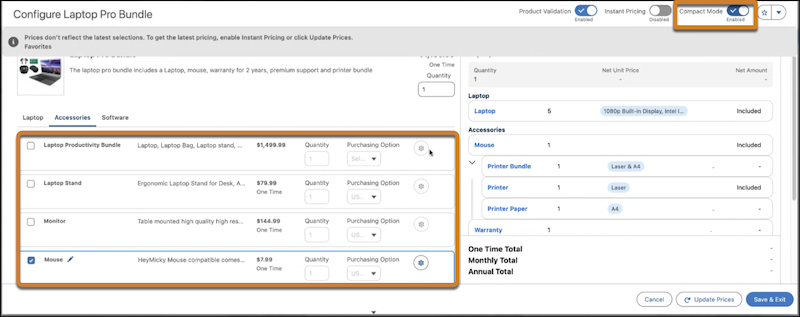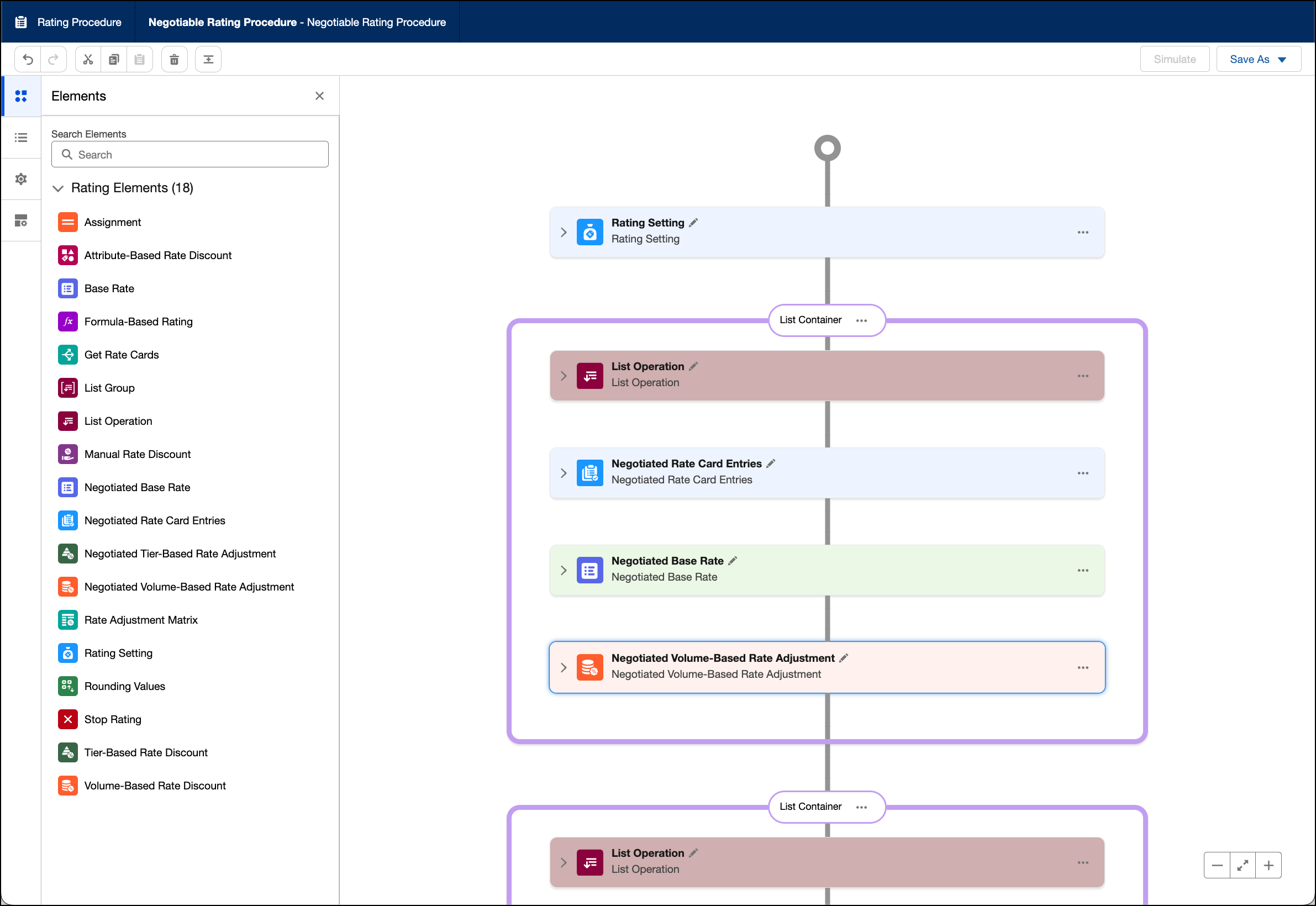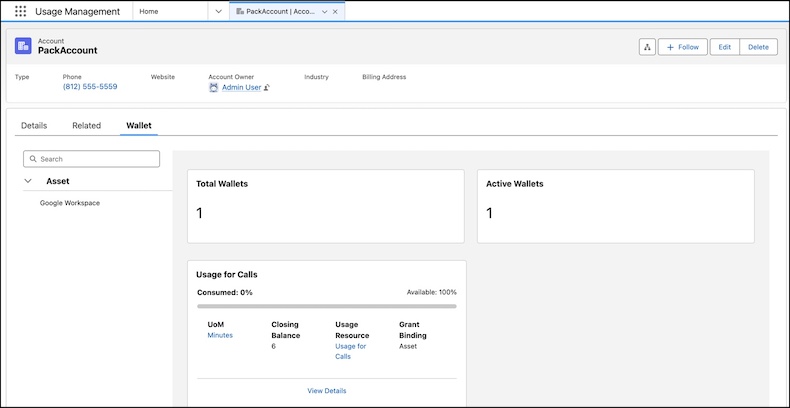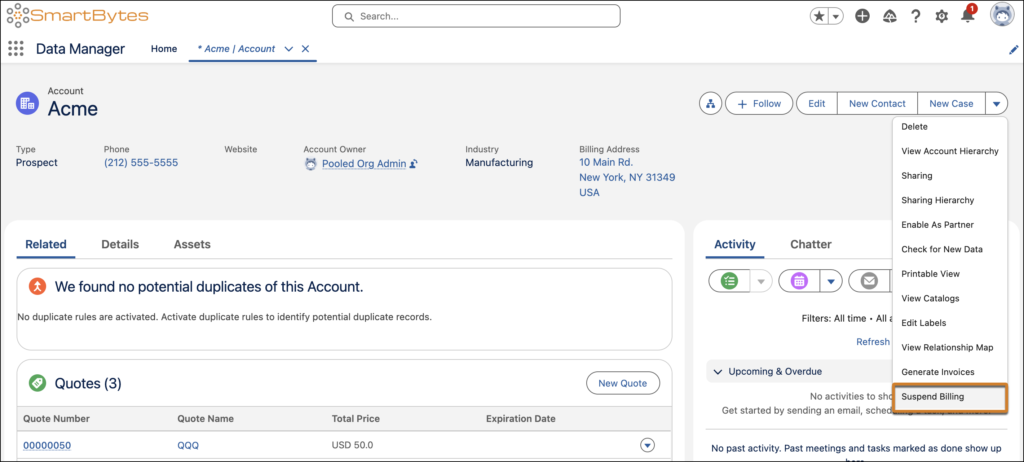The release notes preview are out for Revenue Cloud’s Spring 25 release. The release is not yet available in Sandbox/Scratch orgs so no video for this one yet. I’ll structure my notes on the different Revenue Cloud (Revenue Lifecycle Management) pillars.
Another great release with a lot to cover.
Product Catalog Management – Spring 25 Release Notes
Product Deep Clone
This feature will allow you to clone products along with :
- Attributes
- Child Components
- Selling Models
This should make it a lot more efficient to create and manage products, a lot of us had created flows/lwc to help with this.
Decimal Values for Product Quantity
This one was already an issue for some current projects the quote line quantity field could only use whole numbers so you needed to use workarounds in the pricing procedures to circumvent the limitation.
The feature will allow you to define decimal places per product and define specific rounding quantities.
Faceted Search
You will now be able to add product filters that target ‘Facet’s of a product. The documentation is fairly light but the example states
For example, when searching for a phone, you can refine your search results using facets such as color, screen size, storage capacity, memory, and more.
Salesforce Pricing
Use Einstein Generative AI for context tags
Let Einstein Generative AI fill in the context tags for pricing procedure elements added to your pricing procedure. As with anything AI, could be great, could be terrible, we’ll have to test, the image in the release notes seems to have some obviously wrong context tags with a confidence level set to ‘High’.

Discount Distribution Service Element – Target Customer amount?
This one isn’t obvious given the description but the description mentions the following
Ensure pricing transparency by applying discounts fairly across all line items using the Discount Distribution Service element. Control discounts by excluding products or categories that you don’t want the discounts to apply to. Customize the element for your specific business needs and safeguard profitability by setting floor price limits.
This sounds like an enhanced version of target customer amount in CPQ. Where you will be able to apply discount across all products but limit what products it will be applied to and even add floor price limits to products
Define the price for a product given multiple outputs in a Pricing Table
This feature looks like it will allow you to determine what price a customer should get when more than one could apply based on a ‘Resolution Strategy’.
The details are light, I will be testing that feature and following up with more details.
Product Configurator
Save and Reuse Product configurations
A new feature will allow you to save bundle configurations and reuse them when building new quotes and adding that bundle to the quote.
From the product configurator you will be able to ‘Load Configuration’ to reuse your previously starred configuration
Compact Mode in the Product Configurator
In the current state, the product configurator required a lot of scrolling.
Within the Product Configurator flow you will now be able to turn on/off the

Product search in the Product Configurator
You will now have the option to search in the Revenue Cloud Product Configurator making it much easier especially for large bundle to search through the available components for a bundle.

Custom Fields for Product Components
You can now select which fields to show for the bundle product components within the product configurator. We were previously limited to the fields predefined in the configurator.
You can now customize the screen flow component to define the fields to show.


Advanced Configurator
The advanced configurator is here… Details are light but it should allow you to build validation rules for complex product configurations. The advanced configurations will allow ‘If-then’ logic. It’s not clear yet what complex means here but I should be back with a video on this.
The Revenue Cloud Advanced configurator will also allow you to build Constraint Models. The constraints can be built on top of the ‘If-Then’ logic.
Transaction Management
Tiered Volume Contracted Pricing
So far you had to build your contract pricing and tiered discounting by doing the following :
- Create Contract
- Create contract Item Price
- Created Price Adjustment Schedule
- Create Price Adjustment Tiers
With Revenue Cloud Spring 25 you will now be able to create the price adjustment tiers directly from the Contract Item Price record. This will avoid some unnecessary clicking while creating contracted pricing with volume discount.
Line Level Contract Pricing
Love this one, you were previously limited to one contract per quote/order meaning that if you had multiple contracts with contract item prices for different products you would need multiple quotes/orders.
You can now define the contract to use for contracted pricing at the line level meaning the contract item price can exist against multiple contracts but be unified under one quote/order.
Enhanced Groups in the Line Editor
The Quote/Order Transaction line editor is getting a functionality bump for grouping. Seems you can now edit lines in multiple groups and collapse/expand groups to make for a better user experience.
Custom fields in the ‘Price by Usage’ page
That was super necessary.

We’ll now be able to add custom fields to the Price by usage page, not much to add beyond, this was required.
Large Quotes and Orders (up to 1000 lines)
The logik.io pressure was on, the 200 lines limit in the line editor was too low for a lot of customers.
We can now do 1000 lines.

Usage Management
It seems usage selling and rate management are now unified under ‘Usage management’.
It seems the issue where some records could not be set to ‘Inactive’ after activation has been resolved.
Usage Modeling
It looks like they’re trying to streamline the record creation around usage based products. The current implementation offers a lot of flexibility but was not very straightforward.
You can also now define Usage Aggregation Methods and periods for the consumption of usage based Products.
Predefined Negotiable Rating Elements

A couple new elements are getting added to the Rating Procedure creation screen allowing you to calculate negotiated rate for Usage Based Products.
Billing for Usage Based Products
Quotes and Orders with Usage Based products could not previously be sent to Billing for invoice generation this is resolved in Revenue Cloud Spring 25.
Revenue Cloud now leverages the Data Processing Engine to evaluate actual usage entries for a given period to output the payable amount to be used in the Invoice Generation process.
Wallet Management

Wallet Management in Revenue Cloud is a new feature that will allow your users in service and sales to quickly see realtime consumption of usage based products from the account record page.
Dynamic Revenue Orchestrator
Ramp deals can now be fulfilled with DRO.

Prioritize Orders for Processing
The submission to DRO is an async process in Salesforce Revenue Cloud. You will now be able to define an order’s priority for submission to the queue. Especially helpful for customers with high-volume of orders being processed in dynamic revenue orchestrator (DRO).
Staged Assetization
You can now create the fulfilment assets individually before the order fulfilment is fully complete.
This is great because if any actions (Billing, Revenue Recognition) are dependent on fulfilment they can be triggered as early as possible instead of waiting until the fulfillment is complete.
Cross-plan dependencies
You can now create dependencies between multiple related fulfillment plans.
Future Dated Steps
You will now be able to define future dated steps and steps to execute based on an interval with the Order Start Date.
Similar to my comments on asset creation, this will allow a lot of flexibility to launch automations/billing/rev rec based on steps in the fulfilment plans.
Billing
Invoice Scheduler
A couple updates to the invoice scheduler.
- Ad-Hoc Invoicing
- Great, again now screenshot or testing yet but you can presumably launch an invoice run without creating a record and trying to determine Now + 1 minute in your head and save in time for it to launch as quickly as possible.
- Multi-currency Invoice scheduler
- Create invoice schedulers spanning multiple currencies
- Invoice Scheduler editing
- Currently invoice schedulers are locked once created, you’ll now be able to edit draft/inactive invoice schedulers
Suspend Billing
New feature that allows you to ‘Suspend Billing’ for a specific account or Billing schedule group. Super useful if you need to still run invoice schedules but want to avoid a specific customer getting invoices in cases of disputes or in-flight changes.

Preview Invoices
This will allow your users to generate Invoice Preview through a new API (Invoice Preview API).
This action will generate the next 2 invoices which don’t get created/stores as invoice records. You can then share the preview internally/externally.
Invoices on demand for Accounts and Orders
Not sure if this is different then Ad-Hoc Invoices but this feature will be the way to quickly create Invoices for a given account or order (bill now for my old school Salesforce Billing readers).

Create Invoices from Internal/External Data
Creating invoices from internal or external data will allow the system to generate invoices through the ‘Invoice Ingestion API’ without an order or billing schedules.
This was very much needed and will be very helpful if you need to create invoices from either external 3rd party systems or even Salesforce records for example generate an invoice in Revenue Cloud from Certinia PSA billing event data.
Ramp deals in Billing
Ramps deals weren’t yet supported in Revenue Cloud billing, another thing of the past!
Conclusion
Another great release for Revenue Cloud, things are moving fast and it’s hard to stay up to date.
I’ll keep updating this post and creating videos as the new release becomes available, make sure to subscribe to stay up to date!
